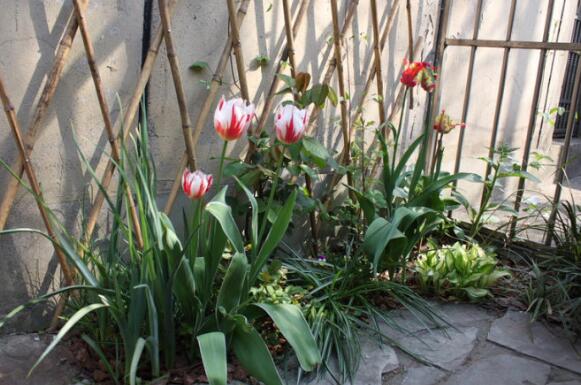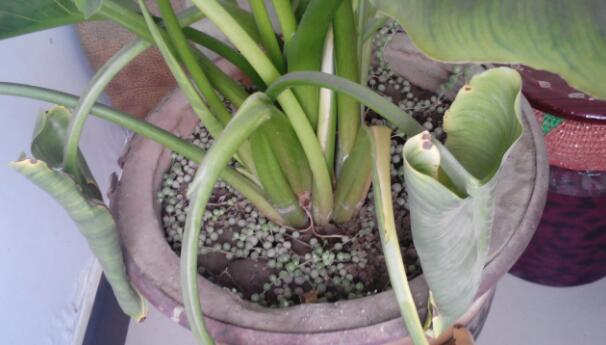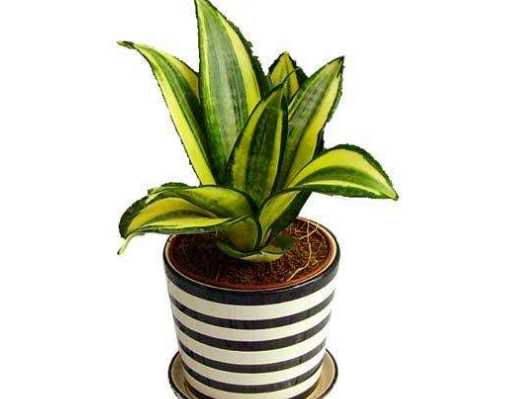How to deal with tulips with worms, pest control of tulips / cigarette soap
Tulip, a noble and beautiful flower, is not only the national flower of the Netherlands, but also loved by flower friends all over the world. However, because of improper maintenance, many people's tulips will be invaded by diseases and insect pests. How to deal with tulips with worms? In fact, it is very simple to find out what kind of diseases and insect pests, and then solve the problem. The following is tulip pest control, follow the editor to learn about it.
First, how to deal with tulips with worms, soap killing

Tulips have a long flowering period and are highly ornamental flowers, so once they are infested by insects, their beauty will be seriously affected. As for how to deal with tulip worms, in fact, it is not difficult. Here are several methods commonly used by netizens. You might as well learn to use them.
If ① is washed with water, ordinary worms can be washed away; you can also buy insecticide or plant spray.
② can also light some mosquito-repellent incense for a while, and the effect is all right.
If ③ finds it troublesome to buy medicine, he can spray it directly on the worm with soapy water, so it will suffocate to death.
④ can pull out the cut tobacco, put it in the soap solution, shake it, fill it in a spray bottle, and spray it on the bug. The reason for this is that cigarettes are very poisonous to worms, especially here on cigarette butts.
For better results, ⑤ can mash garlic, ginger and chili peppers and soak them in water for some time before mixing with soapy water.
2. Pest control of tulips
As the national flower of the Netherlands, tulips attract countless tourists to watch every year. Once they are disturbed by diseases and insect pests, their beauty will be greatly affected. Therefore, we should understand the prevention and control of tulip diseases and insect pests. There are the following kinds of diseases and insect pests:
1. Sclerotinia sclerotiorum
The disease is one of the common diseases and insect pests of tulips, which mainly harms seedlings and bulbs. Causes of Sclerotinia sclerotiorum disease: the injured or diseased bulbs were not removed when the bulbs were stored; the room was not ventilated and the temperature was not in 17 ℃-20 ℃.
Solution: disinfect the soil before planting, find that the plant is sick, pull out the diseased plant immediately, and spray the rest of the plant with 500-fold solution of Dysen zinc.
2. Mosaic virus
After being attacked by the virus, tulip leaves will appear yellow stripes or fine-grained spots, and dark spots on the petals. Not only that, the mosaic virus will also reduce the quality of tulips, degenerate flowers year by year, and delay flowering.
3. Broken color virus
One of the diseases and insect pests of tulips that causes yellowish or grayish white stripes or irregular spots on diseased leaves, sometimes forming flowers and petals with light yellow or white stripes or irregular spots, resulting in broken flowers on red or purple varieties.
Solution: if thin degenerated or seriously diseased plants are found, they should be removed in time; after being found to be mosaic virus or broken color virus, 40% omethoate emulsion can be sprayed 1000 times, in order to reduce the chance of aphid transmission, 2.5% rotenin 800,900 times solution can also be sprayed for prevention and control.
4. Tetranychus prickly
This insect mainly appears in the soil or during storage, harming the bulbs of tulips, causing the bulbs to rot, resulting in irregular plant growth, yellow leaves and wilting. As for what to do about the yellowing of tulip leaves, it has been introduced in detail before, so I won't say much here.
Solution: spray the bead stem with 1000 times of ethyl acaryl alcohol, or soak the injured bulb in thin lime water for 10-15 minutes, take it out and rinse clean, which can also effectively control the insect.
Control of tulip diseases and insect pests
The flower language of tulips: fraternity, thoughtfulness, elegance, wealth, ability, intelligence and kindness. Tulips are favored by many flower lovers. What diseases and insect pests are easy to occur in the growth process of tulips, and how to prevent and cure them?
Prevention of bulb rot
Bulb rot often occurs in the cultivation of tulips, the main reasons are: the dug bulbs are not dried, and the soil with bacteria is attached, which is suitable for the propagation and spread of bacteria during storage, which is suitable for the propagation and spread of bacteria, resulting in bulb mildew; the use of soil with bacteria (mostly Fusarium oxysporum) and insufficiently mature fertilizer in cultivation is damaged by bacteria, resulting in bulb rot. The basin soil is clayey soil, coupled with too much watering, resulting in stagnant water in the basin soil, causing the bulb to be waterlogged and rotten; if the bulb is dug too early, the new bulb is not full and easy to rot. In order to prevent the decay of bulbs, corresponding measures should be taken according to the above pathogenic factors.
Pest control
The main diseases and insect pests of tulips are rot, Sclerotinia sclerotiorum, virus disease, thrips, eggplant aphids and root lice.
Sclerotinia disease
After the disease, yellow or brown slightly raised round spots appear on the scales, and sclerotia are produced in the slight recesses inside. The pathogen infects the stem and produces a long oval spot and a sclerotia on the surface. Prevention and control methods: one is to disinfect the soil before planting; the other is to remove the diseased plants immediately after the disease and spray 500 times of Dysen zinc solution.
Viral disease
Virus disease is one of the main reasons for the degradation of tulip germplasm. There are many kinds of viruses that harm tulips. There are two common viruses in China: mosaic virus and broken color virus. Mosaic virus causes yellow stripes or fine-grained spots on the damaged leaves, dark spots on the petals, and serious leaf decay, so we should pay attention to timely prevention and control of aphids and weeds. The broken color virus causes yellowish or grayish white stripes or irregular spots on diseased leaves, sometimes forming flowers and leaves, light yellow or white stripes or irregular spots on petals, and broken flowers on red or purple varieties. Its prevention and control method is the same as the general virus disease, but the planting place should be far away from the lily.
Rot disease
The disease mainly harms tulip bulbs and plants. After the bulb is infected, water-stained brown spots begin to appear, and then make the bulb soft rot. After the plant was susceptible, the tip and edge of the lower leaves faded, the stem was purple, and the base of the stem shrunk, which withered the plant. Control methods: bulbs should not be stored at high temperature and humidity, and pay attention to ventilation to avoid continuous cropping. Diseased plants and diseased bulbs should be disposed of in time. In the initial stage of infection, spray 1000 times of 70% Taub body fluid in time.
Root lice
Eat bulbs in the soil and drill into the epidermis to suck sap, resulting in weak plant growth or easy to rot or induce disease. Soak the worm-carrying bulb in thin lime water for 10 minutes, remove and rinse to kill root lice.
These are the symptoms and control methods of tulip diseases and insect pests.
Methods of potted culture of tulips and control of diseases and insect pests
How to cultivate potted tulips? Many flower lovers like to raise a pot of tulips at home, which can not only decorate the home, but also be pleasing to the eye. Tulips are suitable for open field planting, and the soil capacity in flowerpots is limited, which often can not meet the needs of tulip growth, so when potted tulips are planted, variety selection, substrate preparation, planting methods and post-planting management are very important. Let's learn the techniques of potted tulips and the cultivation and management of diseases and insect pests.
1 methods of potted culture of tulips
1.1 Variety selection
There are many varieties of tulips, and the varieties of tulips are rich, and the varieties with low plants should be selected when potted. The plant is too high and the lodging resistance is weak. Choose the tulip bulb with bright color, large and full flowers, high quality bulb, full and fat, no trauma in appearance, hard and heavy texture in the handle of the bulb, no disease and insect pests, and the bulb is 10 ~ 12 cm.
1.2 use basin
There are many kinds of tulips to choose from, including plastic, porcelain, wood, earthen pots, flower pots as large as 1 ~ 2 m, and flowerpots as small as 10 ~ 15 cm, but the best material is plain-fired mud pots and plastic pots, with drainage holes at the bottom. When some flowerpots are displayed according to special needs, plastic color pots with similar shapes can be set for beauty, depending on the demand. Choosing the depth of the flowerpot is also very important, the root growth of the tulip directly affects the flowering quality of the tulip, because the flowerpot is too shallow, which is not conducive to the root growth of the tulip bulb, and the root growth is restricted, which seriously affects the absorption of nutrients and water by the roots in the soil, the plant is weak and slender, and the flowers are small, so the best depth of the flowerpot is 15 ~ 20 cm.
1.3 Pool soil
The peat soil or humus soil with good drainage and rich organic matter was selected as the cultivation substrate. Pastoral soil, peat and river sand were prepared according to 3 ∶ 2 ∶ 1, and the suitable pH values were 6.6 ~ 7. The seed balls were soaked in carbendazim for 20 ~ 30 min, then rinsed with clean water, and the dried seed balls were planted in the flowerpot.
1.4 planting method and density
First lay a little stone at the bottom of the basin to facilitate drainage, and then load the prepared soil into the flowerpot. Before planting, in order to speed up the rooting of tulips, the brown epidermis around the root plate at the bottom of the bulb was removed, and then the bulb was placed. The number of bulbs was determined according to the size of the flowerpot, and the distance between bulbs was 2 ~ 3 cm. The end of the bulb is placed in the flowerpot, the tip of the bud is upward, and the top of the bulb is covered with 5 cm of pot soil.
2 cultivation and management
It is best to finish planting tulips in early October, which basically coincides with the planting time in the open field. Then put the flowerpots planting tulips into the outdoor open field, dig ditches in the open field according to the number and size of the flowerpots, put the flowerpots side by side into the ditches, the height of the ditches is the same as the top of the flowerpots, and backfill the soil around and the space between the pots. After planting tulips should be evenly watered once on the same day, the principle is "timely watering, appropriate watering", water should not be too much, too often, otherwise the pot soil is too wet and lead to seed ball rot. This period is the rooting stage of tulips, the quality of watering directly affects the growth of tulip roots, the substrate can not be too dry, it can be kept moist for a long time, and the amount of water also depends on the specific conditions. it depends on the growth and development of different periods in different weather. In early November, the basin is covered with grass to protect against the cold. In the spring of the second year, with the rise of temperature, the surface began to thaw, remove the cold grass curtain, in order to remove the backfill soil, take out the flowerpot, the time is about the first ten days of April. Move the flowerpot to a ventilated and bright place, high temperature or noon should be shaded, according to the weather cloudy and sunny temperature appropriate amount of watering, do not drought or waterlogging, always keep the pot soil moist, and control the right amount of moisture after flowering. During the growing period of tulips, thin foliar fertilizer is applied about once a week.
3. Pest control of tulips.
3.1 Penicillium
After the injured bulb is stored for a period of time, the scales of the bulbs will fade, and the scales will be covered with green fungi. Prevention and treatment: prevent the bulb from being damaged, keep the air circulation and circulation when storing the bulb, and prohibit the planting of infected or injured bulbs.
3.2 Root rot
Some of the roots rotted, the infected roots turned waxy, and the local soil around the roots turned brown. When the root rot is serious, it will cause the flower to wilt and produce flower fragments, which will be attached to the shorter plants.
Prevention and control methods: before planting, chloropicrin was used to disinfect the soil. The bulbs are disinfected with Lobilone to ensure the air permeability of the soil and avoid stagnant water. In the first two weeks after planting, the soil temperature should be kept below 10 ℃ and not more than 12 ℃.
3.3 Brown spot of bud
Orange-brown patches and stripes appear outside the buds, on which there are water droplets, as if gnawed. The symptoms do not develop further, and the plant usually blossoms normally, but the parietal lobe is damaged. Prevention and treatment methods: disinfect the infected soil, spray mancozeb and carbendazim, and disinfect the soil at the depth of 15 cm. The bulbs are disinfected with robilone and carbendan, and can not be planted with tomatoes, chrysanthemums and cereal crops.
3.4 Gray mold
The seed bulb is completely or partially soft, and a large number of black conidia are produced in the affected area. the plants are fragile after aboveground infection, and the seriously infected plants are very short or not developed at all. Control methods: enhance the permeability of the matrix, strengthen the disinfection of the soil, treat the bulbs with fungicides before planting, and check and remove the bulbs with growth obstacles in time after planting.
3.5 Fusarium
During storage, grayish-brown spots will appear on the infected bulbs, sometimes with concentric circles and obvious yellow edges. In a humid environment, susceptible bulbs are covered with white to pink fungi, have a special smell and release ethylene. When the seed ball shrinks and the seed ball is pinched with your hand, there will be a rattling sound inside. Prevention and treatment methods: lightly infected bulbs should be properly stored to ensure normal storage temperature and humidity, and susceptible bulbs in the field should be removed as soon as possible, otherwise ethylene will be released, resulting in gelatinous bud cracking, bud necrosis and flower blast. Bulbs must be disinfected before planting. When planting, the soil temperature should be lower than 10 ℃ and never exceed 13 ℃.
3.6 soft rot
Bulb rot into mud, the formation of white mucus, first from the leaf tip to light red, and then the whole leaf changed color and withered. Prevention and cure method: the bulb root is disinfected with chloramphenicol, and the other methods are the same root rot.
These are all the key points of tulip pot technology. Friends who want to plant tulip flower farmers at home should study hard.
- Prev

How to deal with calla lilies growing insects, calla lotus diseases and insect pests control / 3 insect pests and 3 diseases
Calla lilies, a kind of flowers with beautiful meaning and beautiful colors, are the favorite of modern people. However, due to improper maintenance, many people raise calla lilies will have a variety of problems, such as being attacked by insects, then how to deal with calla lilies? In fact, it is very simple, which kind of bug is encountered, and then you can solve it.
- Next

What about the bugs of tiger orchid? pest control of tiger skin orchid / 3 insect pests and 5 diseases
Tiger Pilan is a common plant in people's life, which has a great purification effect on people's home air and can effectively remove harmful substances in the air in the early Qing Dynasty, although Tiger Pilan is of great benefit to people's life. Its leaves are also the favorite habitat for all kinds of pests. What about the tiger skin orchid bugs?
Related
- Fuxing push coffee new agricultural production and marketing class: lack of small-scale processing plants
- Jujube rice field leisure farm deep ploughing Yilan for five years to create a space for organic food and play
- Nongyu Farm-A trial of organic papaya for brave women with advanced technology
- Four points for attention in the prevention and control of diseases and insect pests of edible fungi
- How to add nutrient solution to Edible Fungi
- Is there any good way to control edible fungus mites?
- Open Inoculation Technology of Edible Fungi
- Is there any clever way to use fertilizer for edible fungus in winter?
- What agents are used to kill the pathogens of edible fungi in the mushroom shed?
- Rapid drying of Edible Fungi

